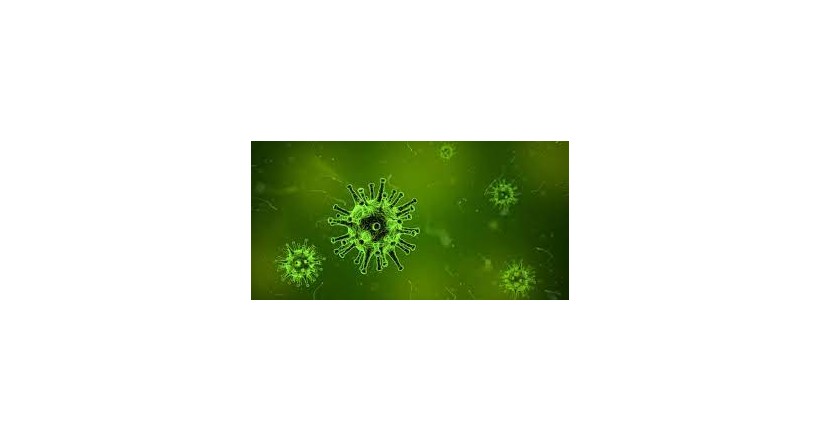Coronaviruses or straight coronavirins are a subfamily of enveloped positive-sense single-stranded RNA viruses that infect mammals and birds, and belong to the family of coronaviruses in the order Eveviruses. The first identified coronavirus was the infectious bronchitis virus that infects chickens in the 1920s, and coronaviruses that cause the common cold in humans were discovered in the 1960s. These viruses are named coronas because of their appearance under an electron microscope that appears as a halo or crown due to spike proteins.The length of these viruses ranges from The genome of coronaviruses ranges between 26,000 and 32,000 nucleotides, and it is the longest genome among RNA viruses. It encodes four structural proteins: the fork (S), the envelope (E), the membrane (M), and the nuclear capsid (N). In some viruses, a fifth protein is the hemagglutinin esterase. (HE) also encodes the replicase gene and several accessory proteins. In addition to maintaining the structure of the virus, these proteins have multiple functions such as promoting infection and counteracting host immune responses. The spike protein binds to receptors on the surface of the host cell and fuses the viral envelope with the cell membrane of the host cell for entry. After entering the cytoplasm, some nonstructural proteins reorganize the inner membrane to create the replication organelles in which transcription and replication occur. During transcription, a template switch occurs to create sub-genomic RNA molecules of different lengths encoding one or more structural proteins, a feature of Eve viruses. It may be Template switching is the mechanism of genetic recombination between different coronaviruses that allows them to generate new strains or be transmitted across species. The replicase gene undergoes ribosomal frameshift -1 during translation to copy the large polyprotein 1ab, which undergoes self-cutting by the protease function of nonstructural proteins 3 and 5 and results in 16 nonstructural proteins that have various functions, the most important of which is nonstructural protein 12, which has the function of RNA-dependent RNA polymerase and performs the process transcription, and nonstructural protein 14, which has a correction function that increases transcription accuracy, and may be the reason why coronaviruses are able to have a genome of this length. Coronavirus infection causes many cellular responses, such as the endoplasmic retinal stress response, which leads to the secretion of cytokines and the occurrence of apoptosis, and affects many signaling pathways and triggers immune responses, but the virus has some mechanisms to resist these responses and inhibit the pathways for the synthesis of interferons. The subfamily of coronaviruses is divided into four. Genera: alpha corona virus, beta corona virus, gamma corona virus, delta corona virus They only infect mammals alpha and beta genera and their common ancestor could be a bat virus, while gamma and delta infect mostly birds mainly with a few species that infect mammals and it is assumed that their common ancestor is a virus that infects the birds. SARS-CoV and SARS-CoV-2 viruses belong to the genus of SARS-associated viruses of the subgenus Sarpicoviruses of the genus of betaviruses.
The subgenus Empicovirus includes viruses that infect mice, including mouse hepatitis virus, which is a model virus in research, and several molecular mechanisms of coronaviruses have been elucidated through its study.
There are seven viruses that infect humans, 4 of which (human coronavirus OC43, human coronavirus HKU1, human coronavirus 229E and human coronavirus NL63) can cause colds, and the other 3 that have caused serious disease outbreaks around the world are SARS-CoV-2 1 (SARS-CoV), Middle East Respiratory Syndrome Coronavirus (MERS-CoV) and Severe Acute Respiratory Syndrome Coronavirus Type 2 (SARS-CoV-2). In addition, there are several coronaviruses that can infect livestock, poultry, pets, laboratory animals, and wild animals, such as avian coronavirus in chicken, several porcine coronaviruses in pigs, canine coronavirus, feline coronavirus in dogs and cats, and coronavirus murine infects mice and rats.




